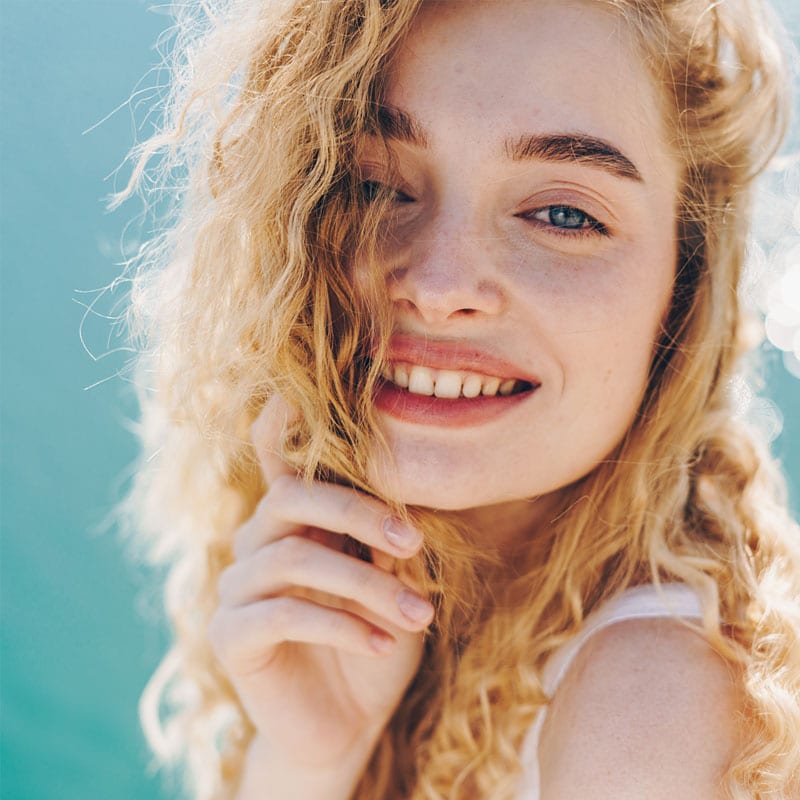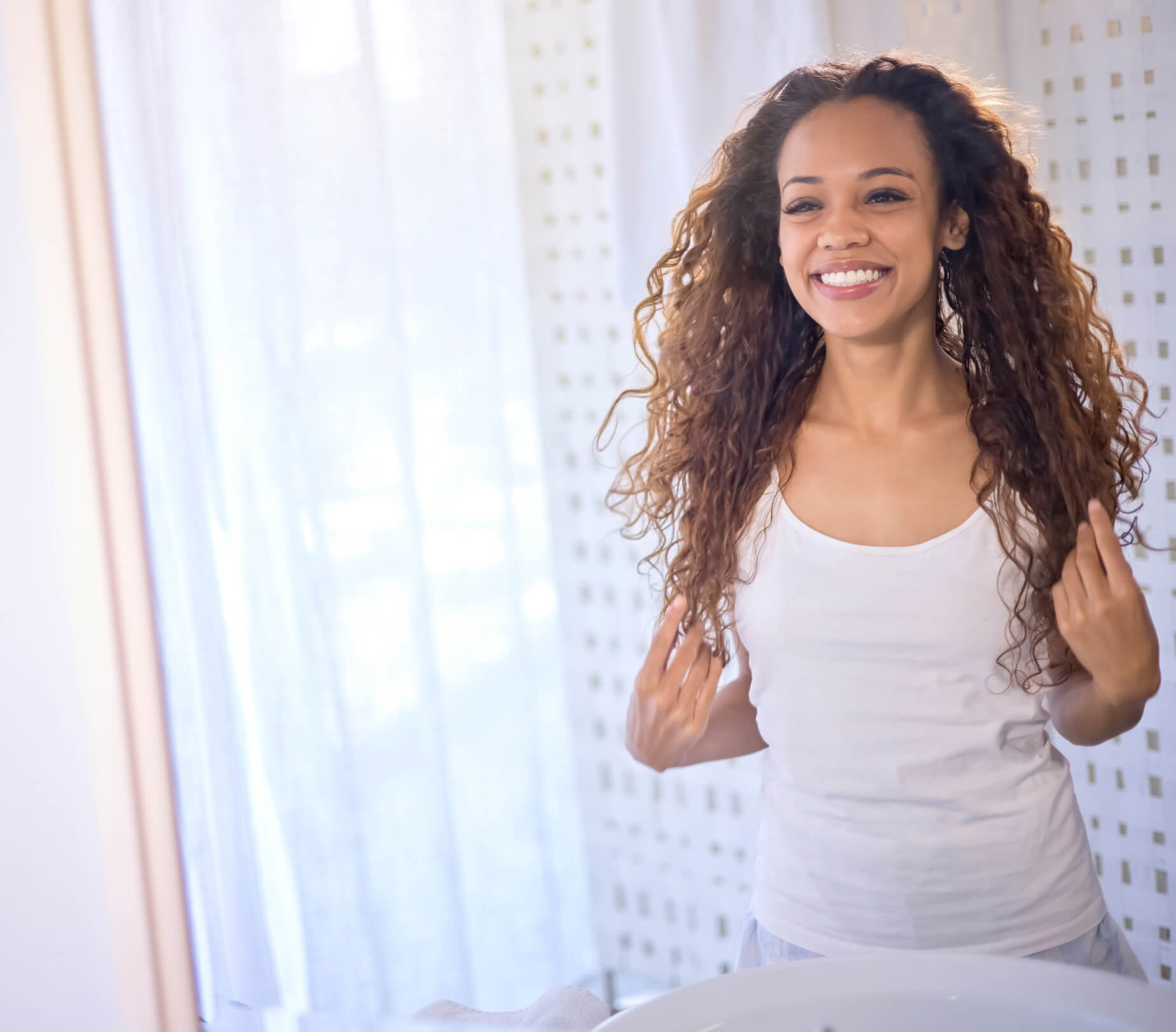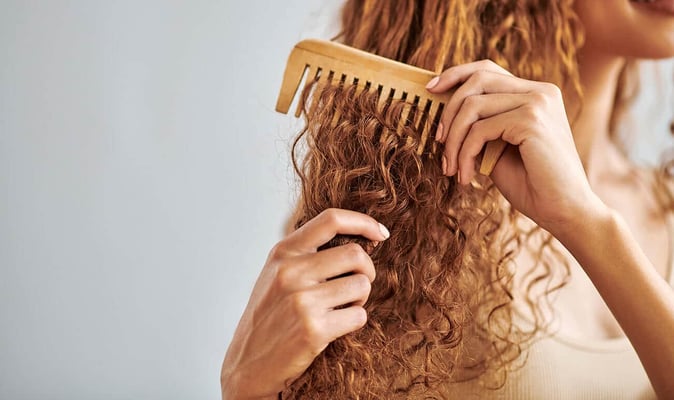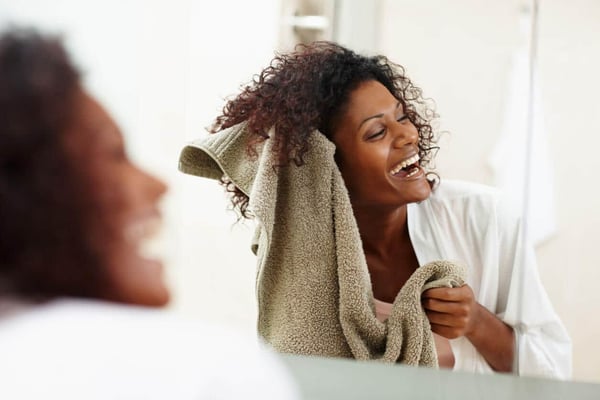Your Guide To Hair Products for Curly Hair: Plus Tips and Tricks
Curly hair has a reputation for being challenging to care for and style. Every head of naturally curly hair has a unique pattern, depending on the shape of the cortex and bonds between hair proteins. Learn more about the characteristics of Type Three hair along with tips and tricks for how to care for natural curls, bring out the curl in waves or transform straight strands into curls with hair products for curly hair. Discover ways to keep hair of any texture healthy while wearing beautiful, frizz-free curls.
Curly hair tends to wind in pronounced “S”-shaped loose curls or ringlets, whereas coily hair has a “Z”-shape. According to the Andre Walker System, Type Three hair is curly, with subtype 3A being loose curls and subtype 3B being tight curls. The FIA system is more common in the curly hair community and has three subtypes. Type 3A refers to curly waves, 3B describes ringlets and 3C identifies corkscrew curls.
While handfuls of curls may feel coarse to the touch, each strand is often delicate and soft. Curly hair may also have high or low porosity, which will determine the most effective hair products for curly hair. Porous hair absorbs products and moisture, but is likely to develop frizz upon exposure to external moisture. Low-porosity curls may be very dry. The type, texture, porosity level and condition of curly hair determine the best approach to hair care

Most styling advice for curly hair covers products for frizzy curly hair. Type 3 and Type 4 hair tend to have lifted cuticles that permit external moisture to pass through and make it more difficult to seal moisture into strands. Choose from products formulated with synthetic or natural frizz-fighting agents.
If you want to know how to make your hair curly, you should focus on styling methods. Heat-free pin curls and foam rollers minimize damage, while heat styling tools rapidly turn straight or wavy locks into curls at the expense of some damage. Permanent treatments are potentially more damaging, but also last longer. Your hair care priorities will determine the best way to get and maintain curls.

The second most significant climate effect on curly hair tends to be dryness. Environmental heat causes similar damage to heat styling. Though direct exposure to high temperatures may be less intense, ultraviolet UVA and UVB rays have damaging and discoloring effects on hair. Look for hair products for curly hair that provide sun protection.

Use a gentle cleanser formulated without harsh sulfates to cleanse hair. Alternative formulas such as “no-poo” and conditioner washing or “co-washing” methods can be helpful if you want to moisturize and reset your curls more frequently.
Follow with a curly hair conditioner. Conditioner is very important as it moisturizes the full length of hair. If your hair and scalp tend to be dry, consider applying deep conditioner or a hair masque once a week or every other week. Use products formulated for your hair texture and condition or proven home treatments such as avocado or egg yolk mixed with oil.
A leave-in conditioner can ensure that the lower portion of strands stays moisturized between hair care sessions. You may also want to apply products for frizzy curly hair such as glossing and smoothing formulas before air drying or heat styling.
The safest way to blow dry curls and enhance their texture is to use a negative ion hair dryer with a diffuser. Always apply heat protectant before using any warm or hot styling tools on curly hair. This type of hair is prone to damage and reacts with breakage, dullness and frizz.
Prolong styles by moisturizing curls and braiding in a protective style overnight or switching to a silk pillowcase that will not snag strands. People with curly hair may benefit from dry shampoo, but the scalps of people with this hair texture usually take longer to become oily than straight or wavy hair.

Applying hair products for curly hair prior to braiding your hair can smooth and adjust the tightness of curls when you undo the braid. Braid-out and twist-out methods are more commonly used for coily or Type Four hair, but may be helpful for styling some Type 3B and 3C hair.
When it comes to how to make your hair curly, there are no changes you can make except in how you style your hair. Minimize damage by using heat-free styling methods such as pin curls or foam rollers. You can also apply heat protectant before styling hair with a curling iron.
Ask your stylist about the gentlest methods for creating a lasting curl pattern. Perms can damage your hair. If you decide to go this route, be sure to care for your hair with products formulated for processed strands.

Whether you eat meat, poultry, fish or a plant-based diet, there are many food-based sources for the vitamins and minerals that are the building blocks of healthy hair. Green leafy vegetables, avocados, tropical fruits and eggs are good for every system in the body. Hair health supplements can be helpful for supplementing your diet if you want to promote growth or repair damage.

Styling hair products for curly hair are the most important for enhancing curls and reducing frizz. There are several options with regard to formulas. Products for frizzy curly hair such as silicone-based glazes and glosses can eliminate frizz, but some stylists warn that non-water-soluble silicone can build up and weigh curls down.
Curl creams and milks add soft texture and definition to strands. Gels and gelees may provide a more defined hold. Look out for using too much of these products, as gel-based formulas can make hair feel crunchy and hard. Newer gel-and-oil hybrid formulas and gels that contain humectants can preserve moisture levels while providing desired definition and hold.

Heat-free methods are the best way to add curl to hair without causing excessive damage. Look up a tutorial on doing pin curls or variations on this styling method or gently wrap hair around foam rollers. Compare hair products for curly hair that create curls. Some formulas may be heat-activated, while other products will help to lock in the results of a heatless styling method.
Curling irons are the most common heat tools for creating curls. Crimpers are less popular, but are used to achieve tighter, ‘Z’-shaped curls. In recent years, appliances with multiple curlers or wands have become available and more affordable. You can achieve almost any curl pattern, tightness and texture with the right heat tools.
If you choose to heat style your hair, you should use a heat protectant. Some products are formulated especially for use when curling hair. Heat styling can cause damage over time. If you choose to go this route, consider investing in a dry shampoo and experimenting with maintaining curly styles for several days between washing and restyling.
Heatless methods can also be helpful for making curls last longer and look better on the second or third day. In general, reducing the frequency with which you wash hair and use heat can improve hair health, especially if your hair is naturally wavy or curly. Curly hair that is frequently straightened can become very damaged without the use of protective and repairing products.

The main reason to avoid sulfates is that they dry out hair, making strands more prone to breakage, damage and frizz. Natural oils already take longer to work their way down to the lower half of strands with a natural wavy, curly or coily texture. Eliminating every trace of oil every time you cleanse your curls is a quick way to dry out hair.
On the other end of the spectrum, you should also exercise caution with no-shampoo or “no-poo” routines that completely eliminate hair and scalp cleanser. Conditioner washing or “co-washing” is a good method for keeping some curls hydrated, but you should still wash hair with a gentle cleanser at least once a week or every three washes.
Other hair products for curly hair to avoid are more of a matter of personal preference. Petrolatum is controversial and mineral oil in hair or skin products may block follicles. Some stylists who specialize in curly hair discourage the use of silicone-based products. Forms of silicone that are not water-soluble can leave behind bioaccumulative buildup and weigh curls down.
At the same time, it is hard to match the powers of silicone in products for frizzy curly hair. Many popular curly hair conditioners, leave-in and styling products include silicone. If a product is advertised as an anti-frizz, glossing or smoothing formula, it probably contains some form of silicone unless it is labeled silicone-free.

Choosing a Curly Hair Shampoo
People with curly hair need not be stressed. It may require extra [Read More...]
The Ultimate Guide to Protecting Against Heat Damage on Curly Hair
Curly hair is not for the faint of heart. It’s for those [Read More...]
Best Frizz Control Hair Products
Hair frizz feels like your hair is going in different directions. It [Read More...]
The Bountiful Benefits of Curly Hair Shampoo
Waves, curls, and coils have a life of their own. If you [Read More...]
Get the Best Sulfate Free Shampoo for Curly Hair
When shopping for shampoo, there are lots of buzzy words on bottles [Read More...]
How to Use Leave In Conditioner for Curly Hair
Managing curly hair can be quite a challenge. It can be a [Read More...]
How to Moisturize Dry Curly Hair
Dealing with damaged hair is no walk in the park. The first [Read More...]
The Best Leave In Conditioner for Curly Hair
By Laura Bissessar Congratulations, dear reader! You’ve won the award of life [Read More...]
5 Best Curly Hair Styling Products
You love your curls, but they can get wild at times. How [Read More...]
6 Step Curly Hair Routine
From soft waves to tight coils, about 65% of people fall somewhere [Read More...]











